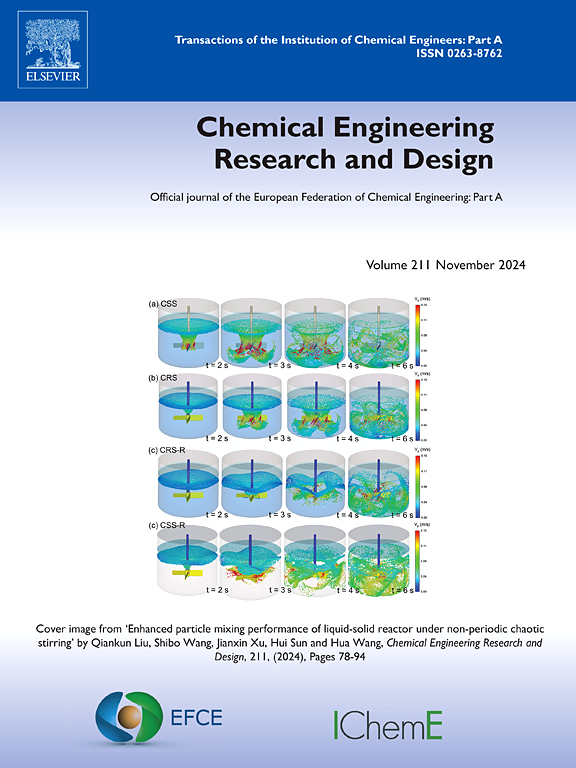Removal of 4-nonylphenol using magnetite modified with silica based molecularly imprinted polymers
IF 3.7
3区 工程技术
Q2 ENGINEERING, CHEMICAL
引用次数: 0
Abstract
This study developed and evaluated magnetic molecularly imprinted polymers (MMIPs) for detecting and identifying 4-nonylphenol (NP). The MMIPs were engineered by synthesizing magnetic Fe3O4 particles via co-precipitation, resulting in particles with an average size of approximately 204.7 nm. These particles were subsequently modified with silica using a sol-gel process to form Fe3O4.SiO2. The molecular imprinting process involved polymerizing Fe3O4.SiO2 with a mixture that included NP (template molecule), methacrylic acid (functional monomer), azo(bis)isobutyronitrile (initiator), and ethylene glycol dimethacrylate (cross-linker). Characterization techniques, such as FTIR spectroscopy, confirmed the presence of functional groups, indicating successful modification and imprinting. TGA demonstrated thermal stability up to 250°C, validating the robustness of the synthesized MMIPs. The optimal adsorption capacity was identified at pH 9.989, with a maximum adsorption capacity of 5 mg/g, which shows an enhancement over non-imprinted polymers. Isotherm adsorption studies indicated a better fit for the Freundlich model, with an R squared value of 0.98 for MMIPs, suggesting the occurrence of a multilayer adsorption process. Kinetic studies revealed that the MMIPs adhered to the pseudo-second-order kinetic model, confirming their efficiency in NP adsorption. The reusability test demonstrated that the MMIPs maintained a consistent adsorption capacity over three cycles, with a minimal decrease of 5 %.
求助全文
约1分钟内获得全文
求助全文
来源期刊

Chemical Engineering Research & Design
工程技术-工程:化工
CiteScore
6.10
自引率
7.70%
发文量
623
审稿时长
42 days
期刊介绍:
ChERD aims to be the principal international journal for publication of high quality, original papers in chemical engineering.
Papers showing how research results can be used in chemical engineering design, and accounts of experimental or theoretical research work bringing new perspectives to established principles, highlighting unsolved problems or indicating directions for future research, are particularly welcome. Contributions that deal with new developments in plant or processes and that can be given quantitative expression are encouraged. The journal is especially interested in papers that extend the boundaries of traditional chemical engineering.
 求助内容:
求助内容: 应助结果提醒方式:
应助结果提醒方式:


